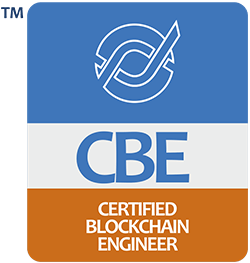Oct 27, 2021
Blockchain is a decentralized distributed network that promises to provide data immutability and security. Each transaction in a Blockchain network is regarded as genuinely safe and verified since there is no central authority to approve and verify the transactions.
Because Blockchain is decentralized and records enormous volumes of transactions in real-time, it may be difficult to determine the truth. The important thing is to reach to an agreement one way or another, or otherwise nasty activities like double-spending attacks might happen. The consensus algorithm is used in this situation.
Understanding Blockchain Consensus Algorithm and its working
The simplest definition of a Blockchain consensus algorithm can be "A process by which all peers in a Blockchain network establish a common acceptance or consensus on the distributed ledger's real-time state. "
A consensus method allows the blockchain network to achieve dependability and develop trust amongst nodes while maintaining environmental security. This is why it is an important element of every Blockchain app development guide and App project in the distributed ledger ecosystem. These algorithms work with a variety of goals in mind.
Consensus algorithms are critical components of blockchain networks because they ensure the integrity and security of these distributed computing platforms. This article examines the types of blockchain consensus mechanisms that are currently in use.
Blockchain Consensus Mechanism Types
1. Blockchain Consensus on Proof of Work (PoW)
Proof of Work (PoW) is the method of generating a cryptographic hash. Cynthia Dwork and Moni Naor initially proposed the notion in 1993, and Satoshi Nakamoto reintroduced it in the Bitcoin whitepaper in 2008. Proof of Work's origins in blockchain systems may be traced back to Adam Back's Hashcash, which was created as a mechanism to combat email spam and denial-of-service assaults.
In this mechanism, the blockchain validators receive data from a block header as input and repeatedly run it through a cryptographic hash function. Every time the input data is passed through the cryptographic hash function, validators include an arbitrary integer called a nonce to hash minor input data changes.
To select what data is added to the next block on a blockchain, PoW requires a lot of electricity and computing capacity. The PoW technique necessitates the use of specialized computers known as ASICs to solve difficult mathematical problems.
2. Blockchain Consensus based on Proof of Stake (PoS)
As an alternative to PoW, the PoS consensus algorithm was introduced in 2011. Even though PoS and PoW have similar goals, they have several key distinctions and characteristics, particularly when validating new blocks on the blockchain network.
The Proof of Stake (PoS) consensus method varies from the Proof of Work (PoW) mining consensus in that it uses a system to validate blocks based on the stake of network participants. Validators stake resources in the form of digital money or tokens rather than performing hash functions. Based on the amount of computational effort involved, the validator for each block is picked at random from among the stakeholders.
To enhance the network's scalability and prevent excessive power waste, the Ethereum blockchain, the world's largest blockchain network in terms of developer activity, has begun to move from the PoW algorithm to the PoS algorithm.
3. Proof-of-Stake with Delegated Ownership (DPoS) Blockchain-based Consensus
Delegated Proof-of-Stake (DPoS), coined by Daniel Larimer, is a form of consensus method based on voting systems in which "delegates" vote for their favorite validators to assist in the consensus state of new blocks. These validators will also be in charge of validating transactions and maintaining the blockchain network, and they will be compensated with transaction fees for their efforts.
Furthermore, each voter's authority is proportionate to the size of the network's investment. EOS, Bitshares, Steem, Tezos, and other blockchain projects employ the DPoS consensus method to validate transactions.
4. Fault Tolerance in the Byzantine Style (BFT)
As the name implies, Byzantine Fault Tolerance is used to cope with Byzantine fault (also known as the Byzantine Generals Problem) - a circumstance in which the system's players must agree on an appropriate strategy to avoid catastrophic system collapse, yet some of them are questionable.
The PBFT and DBFT consensus models are two popular variants of the BFT consensus model in the Blockchain world.
i. Fault Tolerance in Byzantine Practice (PBFT)
PBFT is a lightweight blockchain method that overcomes the Byzantine General's issues by allowing users to validate messages that have been sent to them by conducting a calculation to verify the validity decision.
The party then informs other nodes of its decision, which are then required to make a decision. The final choice is then based on the information gathered from the other nodes.
Some examples of blockchain consensus mechanisms are Stellar, Ripple, and Hyperledger Fabric.
ii. Byzantine Fault Tolerance Delegated (DBFT)
NEO introduced this method. The NEO coin holders have the chance to vote for delegates here as well.
This is true regardless of the amount of money they invest. Delegates can be anybody who meets the minimum conditions, which include a confirmed identity, appropriate equipment, and 1,000 GAS. The speaker is then picked at random from among those delegates.
From the transaction that is now being verified, the speaker generates a new block. He also submits a proposal to the elected delegates, who oversee all transactions and record them on the network. These delegates are allowed to exchange and evaluate the ideas to verify the correctness of the facts and the speaker's honesty. If 2/3rds of the delegates validate the block, it is added to the Blockchain.
This sort of Blockchain consensus protocol is also known as the "Ethereum of China," It can help establish a "smart economy" by digitizing assets and allowing smart contracts to be executed on the Blockchain.
5. Direct Acyclic Graph (DAG)
This mechanism is another fundamental yet important blockchain consensus mechanism that any mobile app development business dealing with Blockchain should be aware of.
Every node in this sort of Blockchain consensus protocol prepares to become the 'miners.'
When miners are eliminated, and users validate transactions, their cost is reduced to $0. Validating transactions between two nearest nodes becomes easier, making the entire process lighter, quicker, and more secure.
IOTA and Hedera Hashgraph are two of the greatest examples of DAG algorithms.
6. Proof of Capacity (PoC)
Solutions to any difficult mathematical challenge are gathered in digital storage such as hard drives using the Proof of Capacity (POC) technique. Users can utilize these hard drives to create blocks so that those who evaluate solutions quickly have a higher chance of producing blocks.
Plotting is the procedure followed. Burstcoin and SpaceMint are two cryptocurrencies that use the PoC blockchain consensus algorithm.
7. Proof Of Burn (PoB)
The proof of Burn (PoB) consensus model is an alternative to PoW and PoS in energy usage. It operates on the premise of allowing miners to 'burn' or 'ruin' virtual cryptocurrency tokens, giving them the ability to create blocks in proportion to the currencies. The more coins they burn, the more likely they will obtain a new block for each coin they get.
However, to burn money, they must transfer it to an address that cannot be used to validate the block. The Slim coin is the best illustration of this consensus method.
8. The Proof of Authority (PoA).
Proof of Authority (PoA), a consensus algorithm type, is based on trust among trusted parties in a Blockchain network. This is an efficient mechanism for private blockchains. It was created by Gavin Wood, an Ethereum co-founder and former Chief Technology Officer. The PoA consensus algorithm relies on the value of identities within a network. Validators don't stake resources, but only their reputation and identities. PoA blockchain networks can be secured by validating nodes arbitrarily selected as trustworthy parties.
Proof of Authority works with a fixed number of block validators. This makes it a highly scalable blockchain system. Transactions are verified by network participants who have been approved. Because nodes' identities can be verified and trusted, the PoA consensus algorithm can be used in applications like supply chains and trade networks.
PoA is a hybrid method that combines the benefits of both PoW and PoS blockchain consensus algorithms.
Miners compete to solve a cryptographic challenge as quickly as possible using specific hardware and electric energy, much as they do in PoW. The blocks they come across, on the other hand, solely include information about the block winner's identity and the reward transaction. This is the point at which the system shifts to a point-of-sale (PoS) model.
9. Proof of Elapsed Time (PoET)
Intel created PoET to replace the cryptographic problems involved in the PoW process by considering that the CPU architecture and the quantity of mining gear determine when and at what frequency a miner wins a block.
It is based on evenly distributing and increasing the probabilities for a larger percentage of participants. As a result, each participating node must wait for a specific period to begin the next mining operation. The member who has been waiting the least amount of time is requested to provide a block.
10. Proof of Importance (PoI)
PoI is a variant of the PoS protocol introduced by NEM that considers the role of shareholders and validators in its functioning. However, this is determined not just by the amount and probability of their shares; other variables like reputation, total balance, and the number of transactions done through any given address all play a role.
Attacks on networks based on the POI consensus model are costly, and users are rewarded for contributing to the network's security.
CONCLUSION
All of these elements share a common objective, which is to achieve consensus within a decentralized network. Even though they share an agreed-upon purpose, these systems differ in the way they achieve consensus. Although the ideal consensus may not exist, it is interesting and inspiring to observe the ways in which consensus mechanisms have developed and adapted in the long term to meet the ever-changing needs of a system like this. It will be fascinating to watch the development of new ideas.
It is crucial to choose the best one based on the needs of the business network, since Blockchain networks aren't able to function properly without consensus algorithms that verify every transaction being made.








